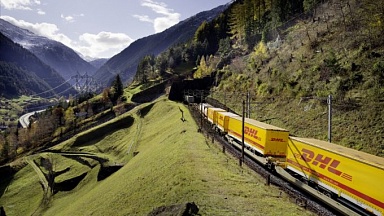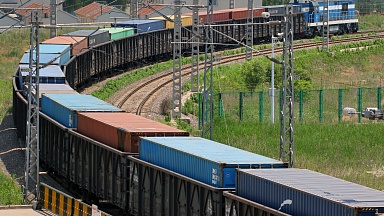Driven by China’s Belt and Road Initiative (BRI), from 2015 onwards rail-borne containerized cargo flows between the European Union (EU) and China increased steadily. Volumes hit a peak between 2020 and early 2022, the start the Russia-Ukraine escalation.
During 2021, well over 600,000 TEUs were moved between Chinese and European railports, with westbound cargo accounting for some two-thirds of the total. The trade represented a total value of some $40 billion. By comparison, containerized ocean freight between Asia and Europe via the Suez Canal route amounted to some 26.5 million TEUs in the same year, of which over 19 million TEUs were westbound.
The most important intercontinental railway corridor, now and in the foreseeable future, connects the two continents through Poland, Belarus, Russia, and Kazakhstan. Departure points are a number of large cities in western China, including Xi’an, Chengdu, Chongqing, Yiwu, and Wuhan, whereas the most important destinations in Europe include Duisburg, Hamburg, Lodz, Tilburg, and also Moscow. Changes in railway gauge, and therefore transshipment handling, take place on the Polish-Belarusian border (typically Malaszewicze/Brest) and on the Kazakh-Chinese border (typically Dostyk/Alashankou or Khorgos).
From an economic perspective, railway transport is competitively positioned between ocean and air transportation. With lead times ideally some 20 days, rail is much faster than ocean, while cheaper than air freight.
After the Russia-Ukraine escalation, cargo volumes transported on the Eurasian corridor dropped sharply. Firstly, the insecure international circumstances, sanctions threat, and public awareness made many cargo owners reluctant to use the route. Secondly, Western sanctions forbade moving specific types of goods, including military and so-called «dual-use» products, into Russia and Belarus. Nevertheless, European operators so far have not been obstructed in buying services from Russian Railways (RZD).
After the initial months of the Ukrainian conflict, volumes recovered to about half of their previous levels: over the whole of 2022 more than 400,000 TEUs were moved along these rail corridors. However, over the first half of 2023, the flow further decreased to some 114,000 containers, albeit with stable monthly volumes.
This might still seem more dramatic than it actually is: during 2022 ocean freight tariffs gradually recovered, relieving some of the earlier pressure on the railway corridor.
Evidently, cargo owners and railway operators in Europe and China would like to diversify their intercontinental services with alternative corridors, bypassing Russia. The so-called Middle Corridor transits Kazakhstan, the Caspian Sea, and Southern Caucasus; from there, southeast Europe can be reached through either Turkey or the Black Sea.
However, despite upgrades, capacity on the Middle Corridor will remain limited, and its complexity and longer lead times mostly prohibit a convincing business case.
Indeed, European operators have reported a mutual understanding with their Chinese counterparts on continuing their focus on the northern route. Perhaps curiously, such an outlook also appears to be reflected by recent upgrades of the Malaszewicze border crossing, planned for a total of 800 million euros, under the auspices of the Polish government. On balance, all hope may not be lost for this symbol of Eurasian connectivity.


